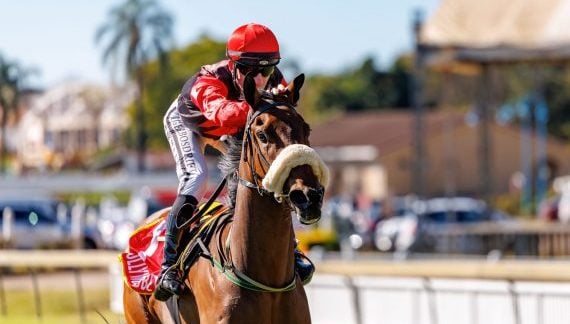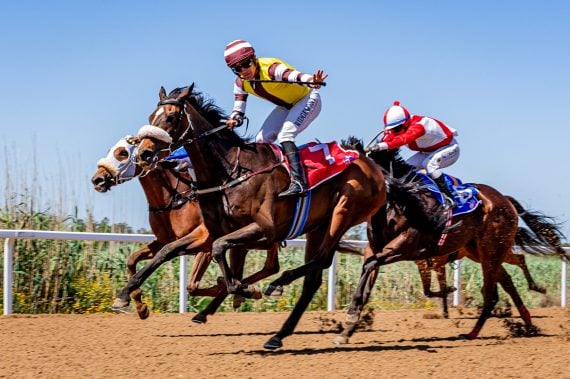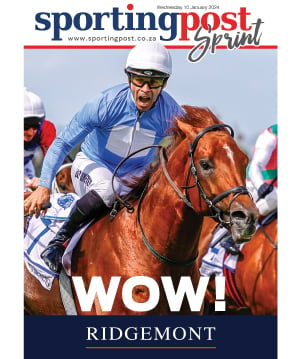The musical hits of 1988 did not age well. An exception was Tracy Chapman’s Fast Car, successfully covered in 2023 by country singer Luke Combs.
Chapman and Combs closed the circle by performing this song together at the 2024 Grammys.
Oscar Foulkes writes that 1988 was also the year that Volume 4 of the Form Stallion Register was published.
Plenty of fast horses were produced by those stallions, and in some cases leaving lasting legacies.
Two stallions – Mexico and Peaceable Kingdom – deserve special mention, for appearing in all four Stallion Registers.
1988 was to be the last covering season for Mexico, whilst Peaceable Kingdom had a few more seasons to go.
Foveros and Elliodor were still firing, along with Golden Thatch and Harry Hotspur.
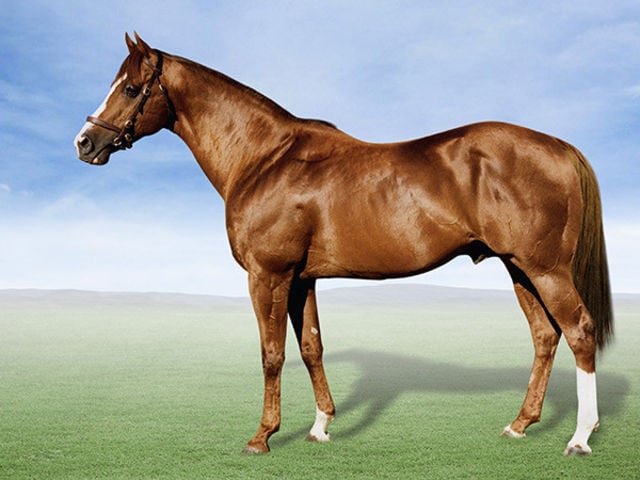
Mexico II (Pic – Form Organisation)
As always, this look-back focuses on stallions making their first appearances in the Stallion Register, so here goes.
The picks of the bunch were National Assembly, who sired 22 crops (the final one covered when he was 25 years old), with Secret Prospector at the what-might-have-been end of the spectrum, dying after siring just six crops.
National Assembly’s influence has been massive, with 16 individual Grade I winners, clocking in at 66% winners from foals and 7.3% stakes-winners. He is also the broodmare sire of Vercingetorix.
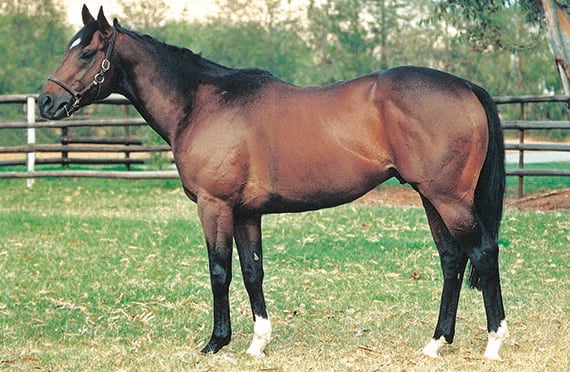
National Assembly (Pic – Supplied)
National Assembly was the best-looking son of Danzig at stud in South Africa, which was no surprise given his $2.5 million yearling sale tag. He was unraced, but went to stud floating on high praise from his trainer, Vincent O’Brien.
Based on his looks, as well as his stud record, I’d work on the assumption that he did have all the promise he was claimed to show on the Ballydoyle training tracks.
Secret Prospector’s six crops delivered a similar percentage of stakes-winners, and three Grade I winners. The underrated Elusive Fort is out of a daughter of his, so their respective influences are stretching well beyond their own lifetimes.
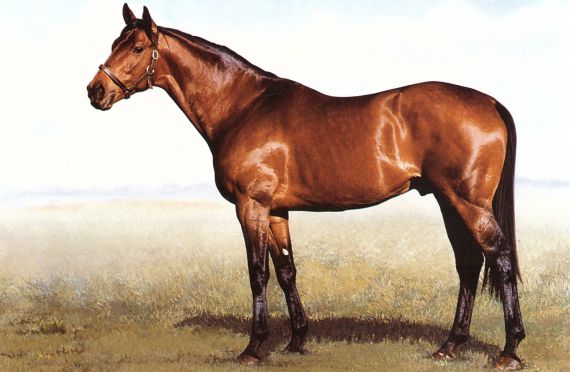
Secret Prospector (Pic – Supplied)
It’s worth digging into Secret Prospector’s credentials just a little, because he was the best son of Mr Prospector at stud in South Africa (as National Assembly was the best son of Danzig).
He showed top-class sprint form on the tough New York circuit without winning a stakes race. Negotiations to purchase him started while he was in the middle of something of a winning streak in Allowance races, with the price going up every time he hit the wire in front.
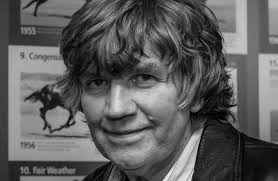
Charles Faull (Pic – Supplied)
The Form Bloodstock team, with Charles Faull doing the cheerleading, was working overtime with Aldora Stud’s Guy Landon to get the deal done. I happened to land in New York in the middle of it all and was taken by Joe Brocklebank (who rode Danzig to one of his victories) to see him.
My pictures of him, on a gloomy November morning, won’t win any awards, but I was blown away by his presence and all-round athleticism. “You have to buy him”, was the sum total of my conversation with Charles when I’d finished my visit.
I need to make it clear that I was not instrumental in his purchase. He was going to be bought anyway. I’m mainly illustrating the impression he made physically. It’s a subjective factor I keep coming back to; even though it’s impossible to measure, a stallion’s looks/look are important.
The more time I spend on this exercise of looking back over stallion successes (and failures) of the past, the less I’m fixated on Grade I winners. Five of Secret Prospector’s six victories came in Allowance races, and his best stakes performances were a second and a third.
Better quality Allowance races can be likened to Pinnacle Plates, where the fields would also comprise horses with graded stakes form. I should mention that Danzig, while unbeaten in his three starts, never progressed beyond New York Allowance races.

Bush Telegraph (Pic – Supplied)
This is a good time to introduce Comic Blush, who contested the New York sprint circuit at a high level, with eight wins (including two stakes wins and a Grade III second).
This son of Blushing Groom was a rig, which resulted in him being sub-fertile. His 10 crops yielded just 172 foals. His four Grade I winners included the Champion filly Spook Express, who was bred by the Jack Syndicate.
The Jack Syndicate (for Jehan, Alan, Carl & Karl) was formed with the express purpose of exploiting the Blushing Groom x Nijinsky nick when they bought the Green Dancer mare, Park Walk. There can’t be many breeding operations in the history of the sport to have been formed specifically to exploit one genetic strategy!
In support of the success of this cross, Comic Blush produced 17 foals out of granddaughters of Nijinsky. Five of those ended up being stakes-winners (two Grade I winners). That’s a mythical strike rate; imagine if this cross hadn’t been limited to just 10% of his foals!
Two sons of Alydar made an appearance in Volume 4. The one with graded stakes form was Steady Beat, but the sire of two Guineas winners was Centenary, who did all his racing in Allowance company (and didn’t break his maiden until he turned five).
In those days we accessed Daily Racing Form on microfiche. I can still remember my excitement as I started looking through the collateral form of the Turf horses he raced against in California. He wasn’t far off the Grade I winner Great Communicator, which made him something of a bargain buy at R4000 per share.
Centenary sired no stakes-winners in his final eight crops (half his foals), which dragged down his strike rate to below par. He is the broodmare sire of Bravura, as well as several other stakes-winners.
Two South African bred stallions left their mark. Bush Telegraph’s five crops produced three Grade I winners, including London News. With 56% winners and 6.9% stakes-winners, we can put a tick next to him as being a success and a tragic early loss.
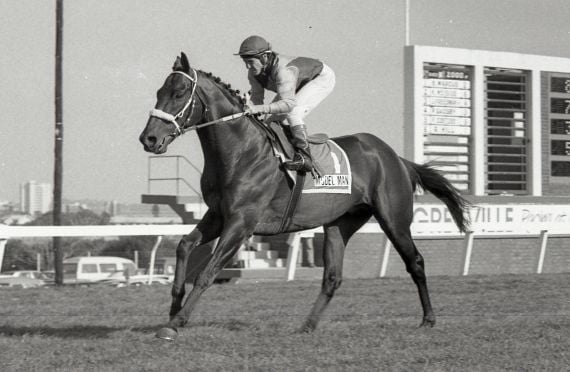
Model Man (Pic – Supplied)
Model Man had a full stud career, with his 18 crops totalling 809 foals. His winners and stakes-winners strike rates were similar to Bush Telegraph, but his longer career enabled him to get to 13 Grade I winners. Another success.
Prince Florimund didn’t share the success of his compatriots, but he did sire the dam of Pocket Power.
Perhaps the biggest surprise for me was realising the extent to which Imperial Dilemma was a loss after siring just four crops. Producing 7% stakes-winners from foals, out of second-string mares, was a very good record. He started his racing career in Britain and Germany, before moving to the US as a three-year-old. He raced there until the age of seven, with a Grade I third along with his Allowance form. He must have been a very sound and honest horse. As a son of Damascus, out of a Buckpasser mare (in turn, out of a Bold Ruler mare), he deserved more attention when he went to stud.
Once again, Volume 4 delivered a cautionary tale, in the form of Best By Test. He was a top-class sprinter, winning 13 races on the New York circuit and breaking an 11-year-old track record over 1200m at Belmont. He was the second-top rated sprinter in the US, with all the looks one would want from a stallion. His sire, Best Turn, was the sire of the successful stallion Cox’s Ridge.
When Best By Test’s first crop came out firing, with five stakes-winners, there was considerable excitement. However, by the time the curtain came down on his stud career, his tally was a below-par 43% winners and 2.6% stakes-winners. Sometimes we’re in too much of a rush to anoint the next king.
We now know that Cox’s Ridge was Best Turn’s only successful son. A similar view could be taken of Riverman, who had several sons retire in South Africa, but internationally he had just one success, in the form of Irish River.
With National Assembly and Secret Prospector as prime exhibits, one would easily conclude that this game is a lot easier when you’re dealing with good individuals by the likes of Danzig and Mr Prospector.
The theory is easy. In practice it’s a lot harder.
In the late 80s, South African breeders were highly skeptical of sons of Mr Prospector. The main criticism was that he was ‘a dirt stallion’ and we race on turf. No matter that Northern Dancer, who arguably had more influence on European racing than any other stallion in the 20th century, only raced on dirt. The criticisms came thick and hard.
Mr Prospector (and other Raise A Native) line stallions have clicked perfectly happily with Eurocentric South African pedigrees. In a way, it’s no different to Luke Combs presenting his country version of Tracy Chapman’s hit.
Excellence shines through, regardless of genre (or racing surface).








